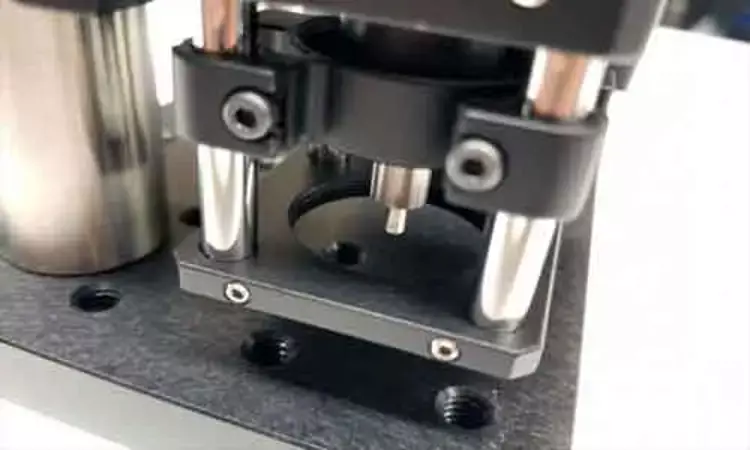- Home
- Medical news & Guidelines
- Anesthesiology
- Cardiology and CTVS
- Critical Care
- Dentistry
- Dermatology
- Diabetes and Endocrinology
- ENT
- Gastroenterology
- Medicine
- Nephrology
- Neurology
- Obstretics-Gynaecology
- Oncology
- Ophthalmology
- Orthopaedics
- Pediatrics-Neonatology
- Psychiatry
- Pulmonology
- Radiology
- Surgery
- Urology
- Laboratory Medicine
- Diet
- Nursing
- Paramedical
- Physiotherapy
- Health news
- Fact Check
- Bone Health Fact Check
- Brain Health Fact Check
- Cancer Related Fact Check
- Child Care Fact Check
- Dental and oral health fact check
- Diabetes and metabolic health fact check
- Diet and Nutrition Fact Check
- Eye and ENT Care Fact Check
- Fitness fact check
- Gut health fact check
- Heart health fact check
- Kidney health fact check
- Medical education fact check
- Men's health fact check
- Respiratory fact check
- Skin and hair care fact check
- Vaccine and Immunization fact check
- Women's health fact check
- AYUSH
- State News
- Andaman and Nicobar Islands
- Andhra Pradesh
- Arunachal Pradesh
- Assam
- Bihar
- Chandigarh
- Chattisgarh
- Dadra and Nagar Haveli
- Daman and Diu
- Delhi
- Goa
- Gujarat
- Haryana
- Himachal Pradesh
- Jammu & Kashmir
- Jharkhand
- Karnataka
- Kerala
- Ladakh
- Lakshadweep
- Madhya Pradesh
- Maharashtra
- Manipur
- Meghalaya
- Mizoram
- Nagaland
- Odisha
- Puducherry
- Punjab
- Rajasthan
- Sikkim
- Tamil Nadu
- Telangana
- Tripura
- Uttar Pradesh
- Uttrakhand
- West Bengal
- Medical Education
- Industry
MIT researchers develop non-invasive technique for blood sugar control in diabetics

USA: Researchers at MIT have developed a noninvasive method that can be used to monitor blood glucose levels from just below the skin surface through the use of infrared light. This will make the management of blood sugar easier for diabetic patients who currently need to prick their fingers several times a day to make sure their blood glucose levels are in control.
The method revolves around the use of Raman spectroscopy that involves shining near-infrared light on the skin which reveals the chemical composition of tissue, such as skin. MIT scientists have now taken an important step toward making this technique practical for patient use: They have shown that they can use it to directly measure glucose concentrations through the skin. Until now, glucose levels had to be calculated indirectly, based on a comparison between Raman signals and a reference measurement of blood glucose levels.
For the study, the researchers developed a new approach that lets them see the glucose signal directly. The novel aspect of their technique is that they shine near-infrared light onto the skin at about a 60-degree angle, but collect the resulting Raman signal from a fiber perpendicular to the skin. This results in a stronger overall signal because the glucose Raman signal can be collected while unwanted reflected signal from the skin surface is filtered out.
The researchers tested the system in pigs and found that after 10 to 15 minutes of calibration, they could get accurate glucose readings for up to an hour. They verified the readings by comparing them to glucose measurements taken from blood samples.
"This is the first time that we directly observed the glucose signal from the tissue in a transdermal way, without going through a lot of advanced computation and signal extraction," says Peter So, a professor of biological and mechanical engineering at MIT.
Further development of the technology is needed before the Raman-based system could be used to monitor people with diabetes, the researchers say. They now plan to work on shrinking the device, which is about the size of a desktop printer, so that it could be portable, in hopes of testing such a device on diabetic patients.
"You might have a device at home or a device in your office that you could put your finger on once in a while, or you might have a probe that you hold to your skin," So says. "That's what we're thinking about in the shorter term."
The study, "Direct observation of glucose fingerprint using in vivo Raman spectroscopy," is published in the journal Science Advances.
Dr Kamal Kant Kohli-MBBS, DTCD- a chest specialist with more than 30 years of practice and a flair for writing clinical articles, Dr Kamal Kant Kohli joined Medical Dialogues as a Chief Editor of Medical News. Besides writing articles, as an editor, he proofreads and verifies all the medical content published on Medical Dialogues including those coming from journals, studies,medical conferences,guidelines etc. Email: drkohli@medicaldialogues.in. Contact no. 011-43720751


